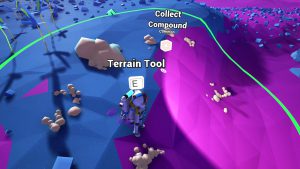Unobtrusive Tutorials
During my ongoing literature review I often discover interesting facts about things I’ve never thought about. Sometimes I can connect these facts with my own observations: The result is mostly a completely new idea why things are as they are. Maybe these ideas are new to you, too. Therefore I’ll share my new science based knowledge with you!
This week: This time, I think about different ways how games introduce new players into the gameplay without breaking the immersion.
Most of the current computer games start with a tutorial or at least provide a tutorial as an option in the game’s main menu. A tutorial explains new players the general gameplay and introduces them into the game controls in order to facilitate the start of a new game. In general, a tutorial is a well structured small mission that provides players with clear instructions and clear goals. For instance, at the start of a First Person Shooter (FPS), players receive accurate instructions about the movement controls and subsequently are required to perform a small task, such as running up a hill or collecting an item, during which they can practice using the controls.

RimWorld informs players about game mechanics with small text boxes.
Unfortunately, most tutorials break the immersion of a game as they heavily restrict a player, use a high amount of text to convey the information and often are not directly tied into the rest of the gameplay. However, there are also very good exceptions that inform the players about the game mechanics without actually forcing them to perform a certain activity. The colony simulator RimWorld, for example, displays small text boxes with information when the player has reached a certain point or encountered a particular problem. Players then can read those information in order to learn more about the relevant game mechanics or just ignore them. This way, the game introduces the players to the gameplay without actually forcing them to perform a certain activity.

Astroneer unobtrusively informs players about important game mechanics.
Alternatively, some games almost ignore the player and only display tiny bits of information the player has to know in order to progress with the game. For instance, Astroneer, a space exploration as well as building game, only displays the key binding activating a certain game mechanic when the player has reached a certain point for the very first time. During the gameplay, players need to gather different resources using a so-called Terrain Tool which can be activated by pressing ‚Q‘. As soon as a new player approaches a patch of resources for the very first time, the game just informs the player about the tool without actually explaining how to operate it. This allows the player to activate this game mechanic and subsequently to try it out on their own thus learning the game controls on the fly. Moreover, Astroneer displays buttons on machines or vehicles when a certain activity can be performed without directly explaining what the button does. This again allows players to observe the functionality of the game mechanics and to learn the gameplay from scratch. In the end, Astroneer’s tutorial is hardly noticeable by the players as it does not break the immersion and allows players to continuously play the game.
As a conclusion, tutorials are important as they inform players about game controls they can only guess. However, it is important that the information are presented in a very unobtrusive way in order to avoid breaking the immersion and allowing players to learn the gameplay from scratch which can even result in a rewarding feeling as it gives players the impression of having discovered something on their own.